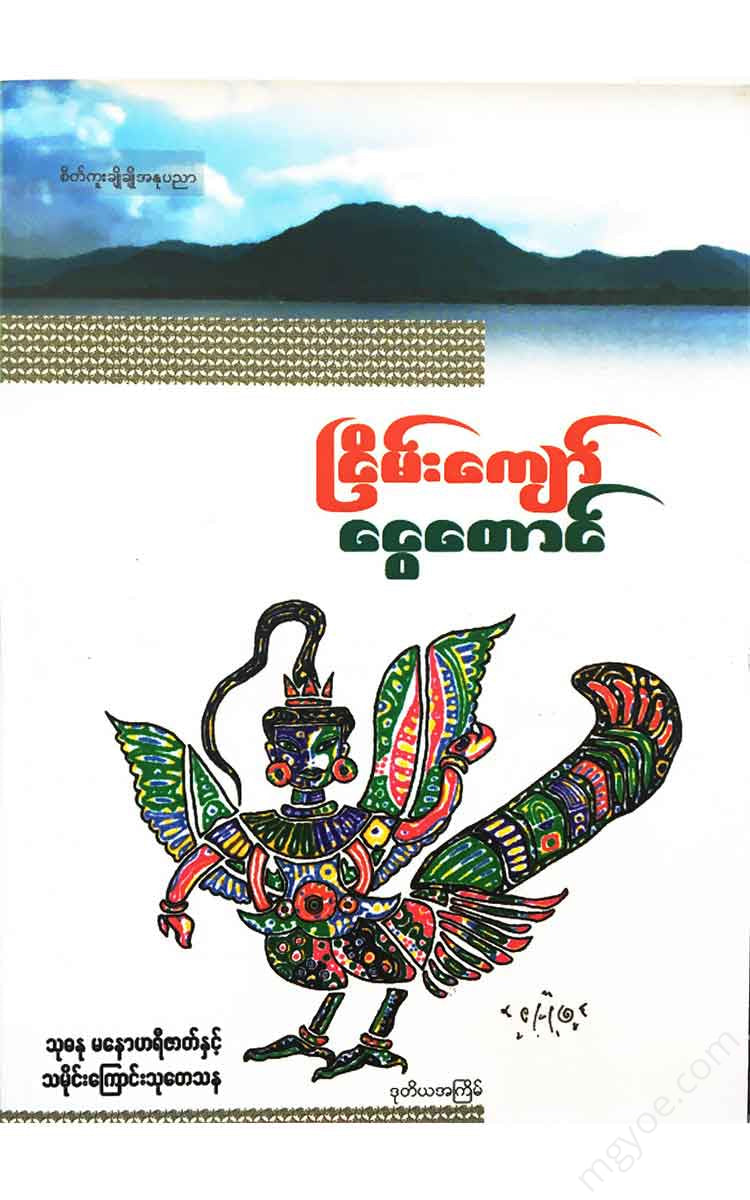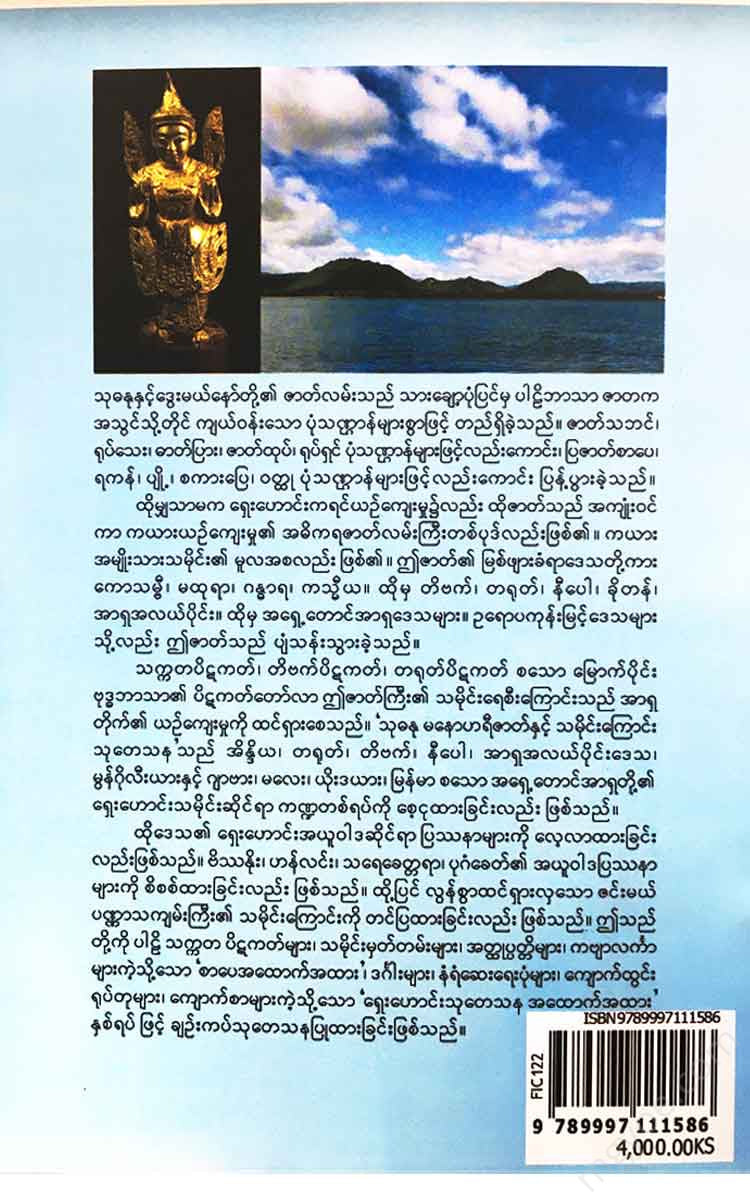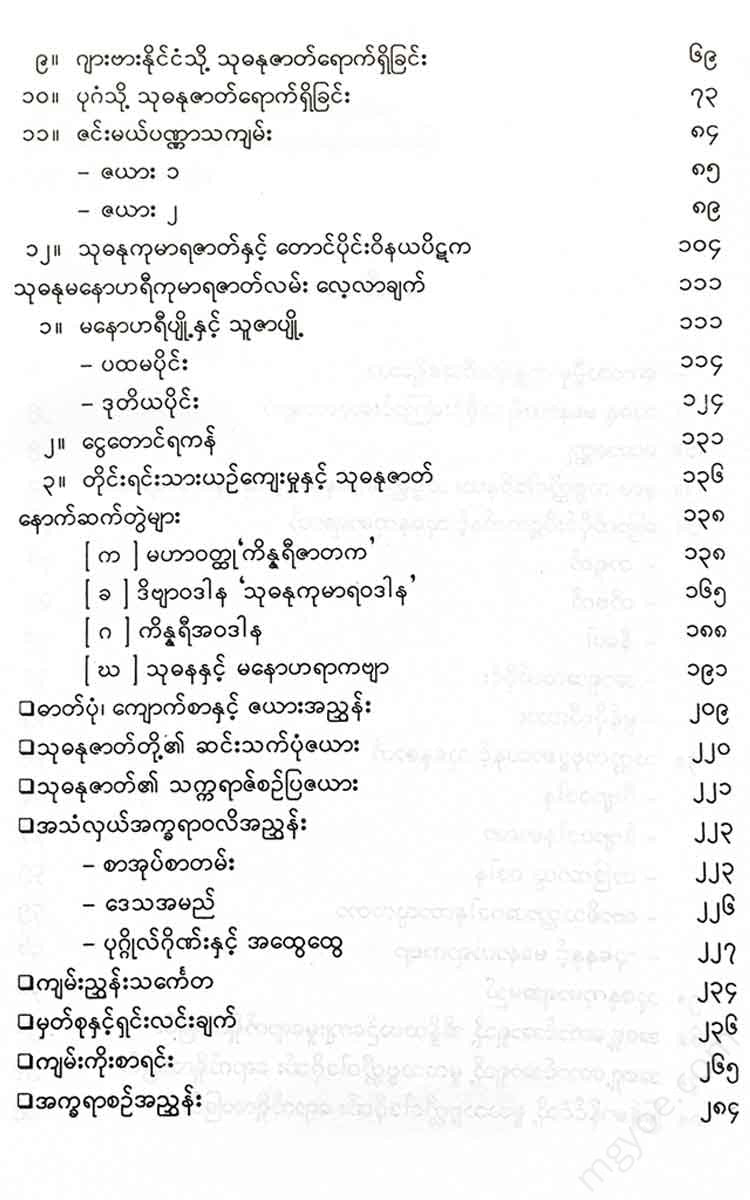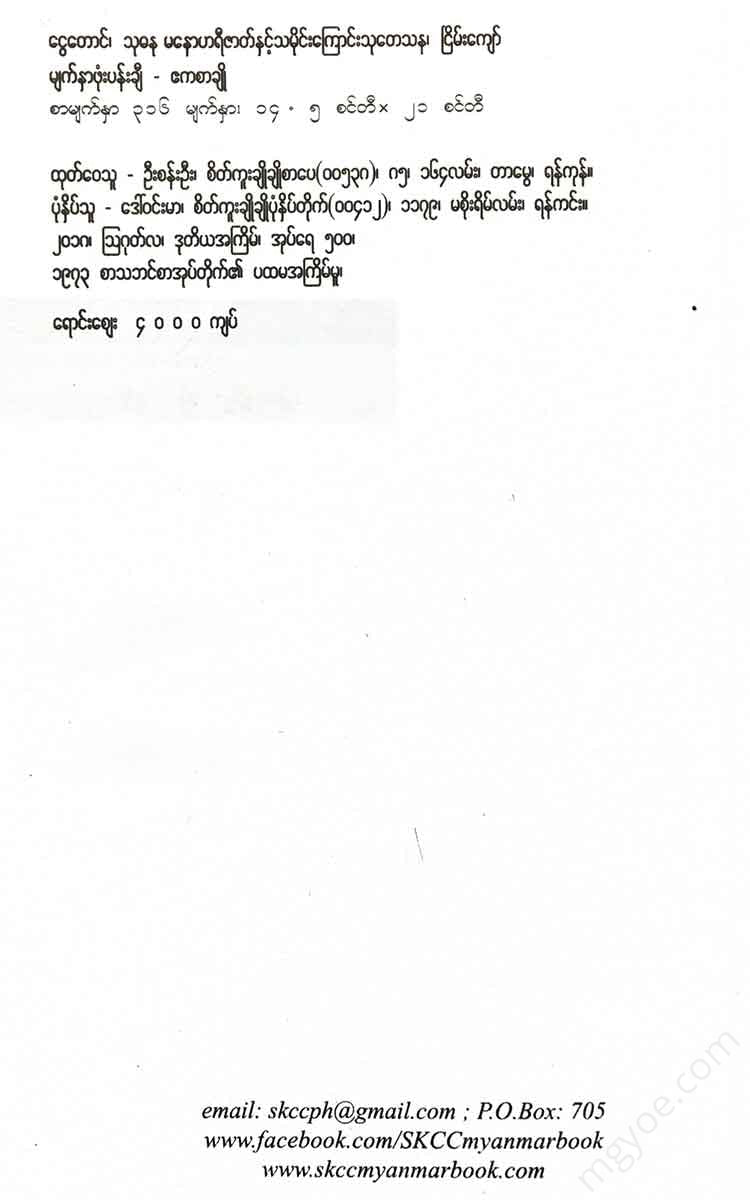စိတ်ကူးချိုချိုစာပေ
Nyein Kyaw - Ngwe Taung
Nyein Kyaw - Ngwe Taung
Couldn't load pickup availability
In the early mornings of pleasant winter days, I often sit on the marble steps of the university central library waiting for the doors to open. As soon as the doors open, I go upstairs to the rental office and borrow old books, new ones. Sometimes one or two books, sometimes four or five. If it is important, I carry two large bags with the rental cards of friends. It is very heavy, so I ask the boys who are close to me to help me carry it. On such important days, I skip school. I make full use of my twenty-five days of absence in a hundred days here. I struggle to get into the Hino car, which is difficult to get into. When I get off the car, I have to walk about three furlongs to get home. You might think it is tiring. But I am not tired yet, I am not tired yet, I am not tired yet. The spirit of research is so powerful that it can catch me.
Time was running out. Because he was afraid that Prince Sudhanu and the beautiful young girl Kinnari would disappear. Sudhanu and his wife were the most troublesome. They often ran away and hid their tracks. They lost sight of each other in Kosambi and wandered for a week. They searched for each other in the forest, but they met face to face in Mathura and Kasmaya. Kinnari took Sudhanu with him and flew all over Asia and the highlands of Europe. As they flew, the letters changed and changed. The languages were also diverse. Sanskrit, Chinese, Tibetan, Mongolian, Japanese, Korean, Pali, English, French, German, Khotanese and Southeast Asian languages.
For someone with only ten years of experience in research, the subject of Sudhanu is a daunting task. It took more than twenty months to start writing. It took more than two months to finish.
I understand that it is finished, but not yet truly complete.
2
The lack of complete documentation is a great obstacle for a researcher. There are not many reliable libraries. The National Library, the Library of the Literature Palace. The Ramakrishna Library, the Buddhist University Library. The Central Library of Universities, and the internal libraries of departments have to be relied upon. The Library of the History Department of the University of Arts and Sciences, Yangon, the Library of the Philosophy Department, the Library of the Pali Department, the Library of the Research Society, the Library of the Historical Commission, and the Library of Archaeology. When the required book is not available in these libraries, one has to inquire by writing to acquaintances in Yangon, Mandalay, and Bagan or by going there in person. If one cannot find it, one considers that the book has already been found. Articles and books of minor importance are often obtained with the help of friends and relatives abroad. They are copied by hand and sent. They are photographed and sent. However, they cannot afford expensive books. Some books are not allowed to be photocopied or microfilmed according to the copyright law. What can one do then? Still not giving up. Some of the familiar libraries were urged to order books from abroad. They were ordered. However, they were not new books, and the books were lost due to delays. Some were printed in Beijing, but there are no copies left in Beijing.
It points to a Hong Kong bookstore. It is difficult to buy books here due to the currency differences between Hong Kong and Myanmar. Private orders are no longer available.
Some of the texts had to be purchased in sets. All I wanted was about a hundred pages from each set. Of the Nathang, Meng, Lhasa, Peking, and Tokyo editions, only the Tokyo edition was easily available. So I wrote to Mr. Hirosato Itenyi, the director of the Tibetan Pitaka Research Institute in Tokyo, Japan. He sent me a letter and a catalog. He happily asked me to go and see the librarian and order one. He said that this edition was cheaper and more elegant than the Nathang and Lhasa editions. The librarian sighed when he saw the price. A set of one hundred and fifty-one Tibetan Pitakas cost twenty-seven thousand. The shipping cost was one thousand two hundred. The library’s annual budget was almost as much as this one edition, so he shook his head and said that he could not afford it. Because of that , I asked him to buy a copy of the Chinese version of the Tsakshi Tripitaka, which was printed in Tokyo. The Tsakshi Tripitaka is much more expensive. The most unfortunate thing is that the Tsakshi Tripitaka from Tokyo is not in Myanmar. It is in the Buddhist University Library, donated by the Japanese Embassy. It is not complete. The two volumes containing the Sudhanu story were not even donated.
If I don't have the original text, I can only imagine the first nine. However, even Reston's Indian and Tibetan Tales, translated in chronological order, cannot be found in Myanmar. At that time, I had to be content with a secondary reference, but I couldn't be satisfied with it. At this time, I received a book by Professor Hikata of Kyushu University, Japan, as a gift. In the introduction to the book, he wrote that he had obtained many necessary documents from India, Tibet, Mongolia, America, and Europe, and that he had visited the Cambridge University Library to read a copy of it himself. Everything seemed to be smooth and elegant.
But to be on par with developed countries, we still need to make great efforts. I think we will have to make great efforts to build even one-tenth of the libraries of Cambridge University, Harvard University, and the American Library of Congress. Before we can collect complete books for each subject at once, it would be a blessing if we could close the gap and order the collection of everything needed for a topic. I think we will have to wait a long time to be happy.
Can't we write with all the evidence we can get? The answer to the question is already in the question itself. In both cases, comparing research and comparing, the evidence we can get is always too much. The danger is greater. The danger is not worth considering. The meaning of sufficient evidence is not to search for all the evidence. It is within reach.
Therefore, it is said to be incomplete.
This incompleteness makes it difficult to see the continuity. It does not provide a detailed comparative study. It only gives a superficial view. If more than thirty books and fifty papers are added, it will be more accurate than now. It is hoped that it will be complete. However, only then will there be a complete picture. This is because archaeological evidence and artifacts are constantly adding new information.
In fact, this paper is only a preliminary study of the Sudhanu caste and its history.
3
There are books that cover hundreds of pages of events that have taken place over centuries. There are books that cover the same events in detail over a hundred, two, or three hundred years. That book is more important. A book that covers the history of Southeast Asian culture is more reliable than a book that covers the history of Southeast Asian culture. A book that covers three or four centuries is more reliable than a book that covers more than a thousand years. A book that covers architecture, statues, coins, or other artifacts, or a specific event in a dynasty, is more reliable than a book that covers the history of Southeast Asian culture.
Is it worth easily accepting and citing a claim in a book at first glance? Even the year and name of the different scholars have not been carefully negotiated. Interpretations, explanations, and reviews should be scrutinized more. Here, who has criticized and how about the book you are going to quote? Basically, read other books and book reviews on the same subject. Sometimes, in the footnotes of other documents that are slightly related but have different subjects, you will find a justification for the claim you are going to quote. That justification is then rejected with new references in the body of another document and a new claim is presented. Because of this complexity, even a traveler in a maze is no different.
I think that the tendency to cite the evidence you want as soon as you see it is just a matter of making it easy. Dr. Wintanic said... The doctor said... The cited papers are often ridiculed as “research papers”. Some say that current papers are more reliable and trustworthy than ancient papers. There have been instances where a claim was made by citing a recent paper and then comparing it with the findings in Myanmar, and it went wrong. This is because the scholar who wrote the cited paper did not cite the original text. It was also because he neglected to consider two ancient documents. By repeating the same claim, they commit another mistake. This crime certainly diminishes the value of the research paper. The way to avoid this kind of crime is to scrutinize and evaluate research papers and papers with critical reviews.
There are nearly a hundred journals and issues published internationally on the subject of literature and culture. Only over twenty come to Myanmar on a regular basis. You cannot find all of those over twenty in one library. You can find them in four or five libraries. Some of them have only been published for three or four years. Some have been published for almost a hundred years. There are only four or five issues of each journal so far. Some of them have almost two hundred. It is not easy to find the information you want in those issues. Some journal issues have already published indexes, so it is easy to find. However, it is not from volume 1 to now. Only volumes 1 to 20, 1 to 30 have to be indexed. From 31 to now, 80, 90, and more than 100 have not been indexed. Many journal issues do not yet have indexes. At that time, hundreds of journal issues had to be read by sifting through the table of contents in four or five libraries. Then I had to skim through the relevant articles and papers, page by page. I think about ninety-five percent of the pages were useless for the paper I was working on. I only noticed the eye strain and brain fog when I couldn't find what I needed.
When you find what you need, you are happy and joyful. That joy makes you forget for a moment the library staff who is so busy with books that you are so annoyed that you are dealing with them. The discomfort that you have caused because of the staff's physical and mental behavior disappears in a moment. You forget everything except yourself and your subject for a moment. The joy of a researcher always arises at such times. Once you are addicted to this joy, you only have to understand that the great snake of research has become so big that it cannot leave your side. Once you have received that sting due to your passion, the exit automatically closes.
Share









